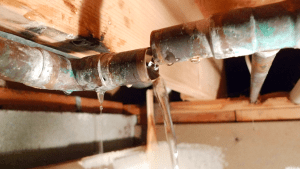Almost everyone will have their unique opinion in relation to Locating water leaks.

Early detection of dripping water lines can minimize a possible disaster. Some tiny water leaks may not be noticeable.
1. Examine the Water Meter
Every residence has a water meter. Examining it is a proven manner in which assists you find leaks. For starters, shut off all the water sources. Ensure no person will certainly flush, use the tap, shower, run the cleaning device or dishwasher. From there, most likely to the meter as well as watch if it will alter. Given that no person is utilizing it, there must be no activities. If it moves, that indicates a fast-moving leakage. If you discover no changes, wait an hour or 2 and also check back once more. This implies you might have a sluggish leakage that might also be underground.
2. Check Water Consumption
Examine your water bills as well as track your water consumption. As the one paying it, you ought to discover if there are any discrepancies. If you identify sudden changes, despite your consumption being the same, it implies that you have leaks in your plumbing system. Keep in mind, your water expense need to drop under the exact same variety on a monthly basis. An abrupt spike in your costs shows a fast-moving leakage.
A stable boost every month, also with the very same habits, shows you have a sluggish leak that's likewise gradually intensifying. Call a plumber to completely examine your home, particularly if you feel a warm area on your floor with piping underneath.
3. Do a Food Coloring Examination
30% comes from bathrooms when it comes to water consumption. Examination to see if they are running appropriately. Decrease specks of food shade in the storage tank and wait 10 minutes. If the color somehow infiltrates your dish during that time without flushing, there's a leakage between the container and dish.
4. Asses Exterior Lines
Don't forget to examine your outside water lines too. Needs to water leak out of the link, you have a loosened rubber gasket. One tiny leakage can waste tons of water and also spike your water expense.
5. Examine the scenario as well as evaluate
Property owners need to make it a practice to inspect under the sink counters and also even inside cupboards for any kind of bad odor or mold and mildew growth. These two red flags show a leak so timely interest is needed. Doing regular inspections, even bi-annually, can save you from a major issue.
A lot more notably, if you recognize your residence is currently old, keep a watchful eye on your heaters, hoses, pipelines and so on. Look for stainings as well as deteriorating as a lot of home appliances and pipelines have a life span. They will certainly also naturally wear away because of tear and put on. If you presume dripping water lines in your plumbing system, do not wait on it to escalate. Call an expert plumber right now so you don't wind up with an awful mess in your house.
Early discovery of leaking water lines can alleviate a possible catastrophe. Some small water leakages may not be noticeable. Checking it is a guaranteed method that aids you find leakages. One little leak can throw away tons of water and spike your water expense.
If you suspect dripping water lines in your plumbing system, don't wait for it to rise.
WARNING SIGNS OF WATER LEAKAGE BEHIND THE WALL
PERSISTENT MUSTY ODORS
As water slowly drips from a leaky pipe inside the wall, flooring and sheetrock stay damp and develop an odor similar to wet cardboard. It generates a musty smell that can help you find hidden leaks.
MOLD IN UNUSUAL AREAS
Mold usually grows in wet areas like kitchens, baths and laundry rooms. If you spot the stuff on walls or baseboards in other rooms of the house, it’s a good indicator of undetected water leaks.
STAINS THAT GROW
When mold thrives around a leaky pipe, it sometimes takes hold on the inside surface of the affected wall. A growing stain on otherwise clean sheetrock is often your sign of a hidden plumbing problem.
PEELING OR BUBBLING WALLPAPER / PAINT
This clue is easy to miss in rooms that don’t get much use. When you see wallpaper separating along seams or paint bubbling or flaking off the wall, blame sheetrock that stays wet because of an undetected leak.
BUCKLED CEILINGS AND STAINED FLOORS
If ceilings or floors in bathrooms, kitchens or laundry areas develop structural problems, don’t rule out constant damp inside the walls. Wet sheetrock can affect adjacent framing, flooring and ceilings.
https://www.servicemasterbyzaba.com/blog/how-to-detect-water-leakage-in-walls/

We had been guided to that article on Leaking water lines from someone on another web address. Do you know about another person who is in to the topic? Take a moment to share it. Thank you for your time. Visit us again soon.